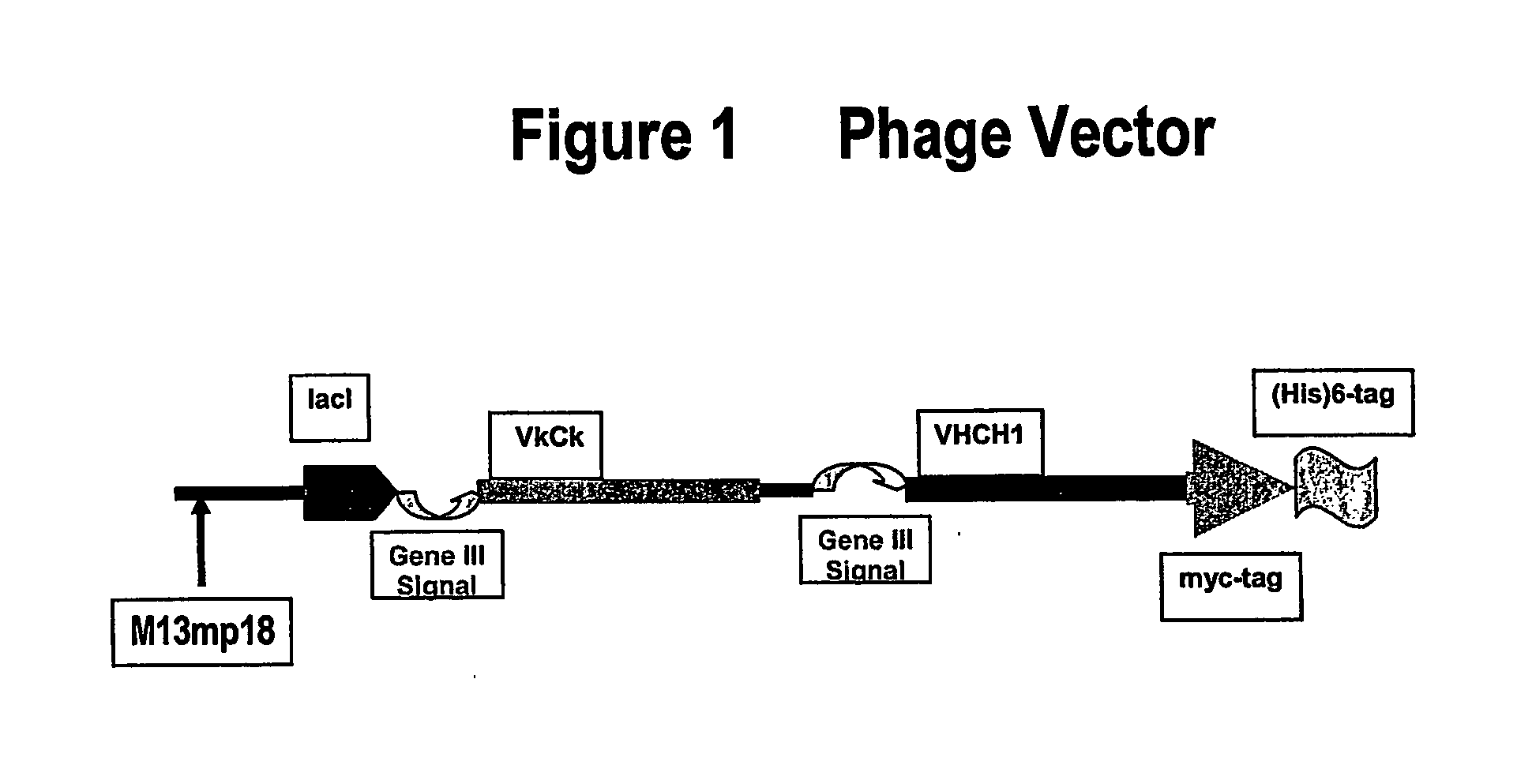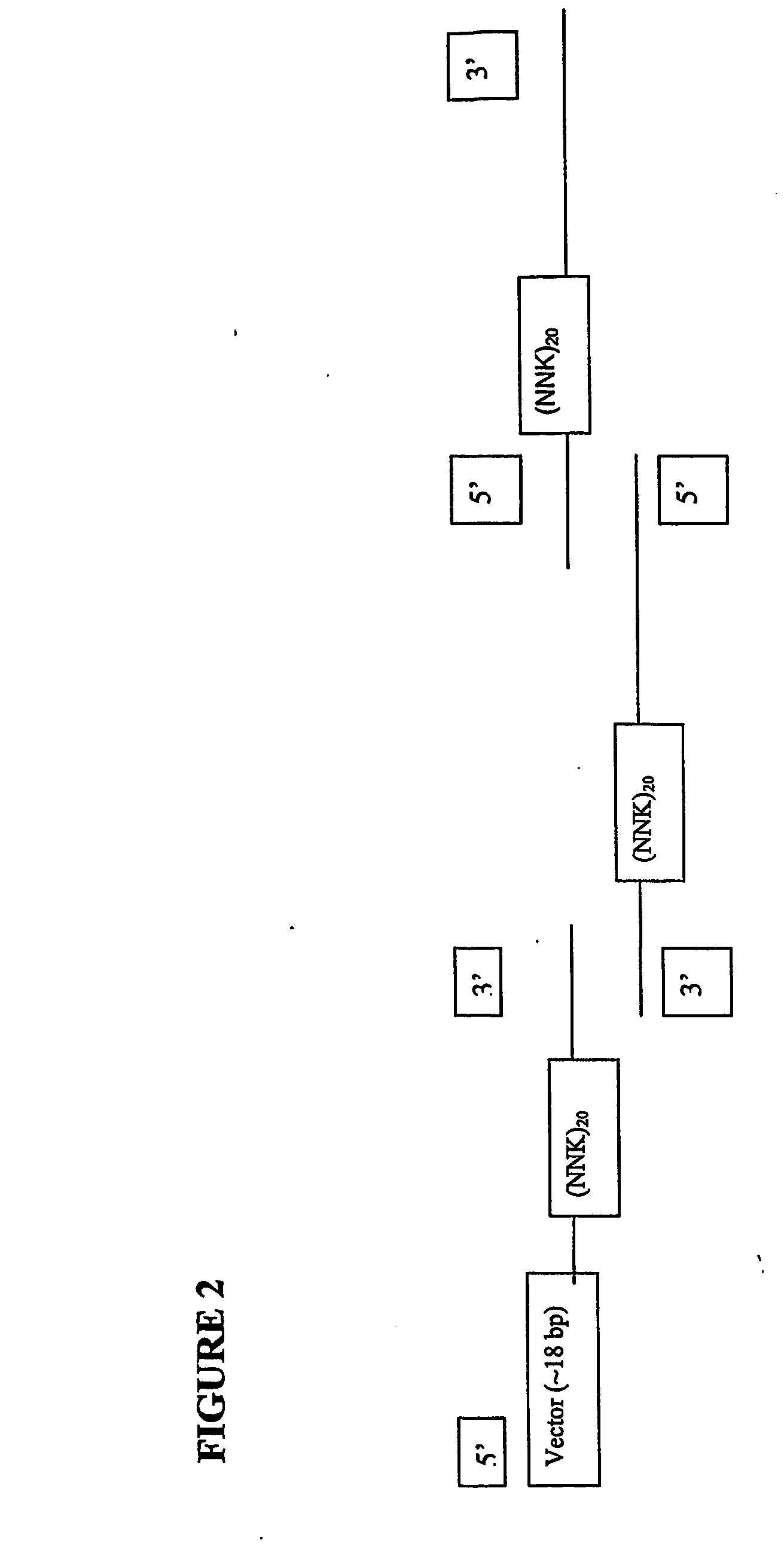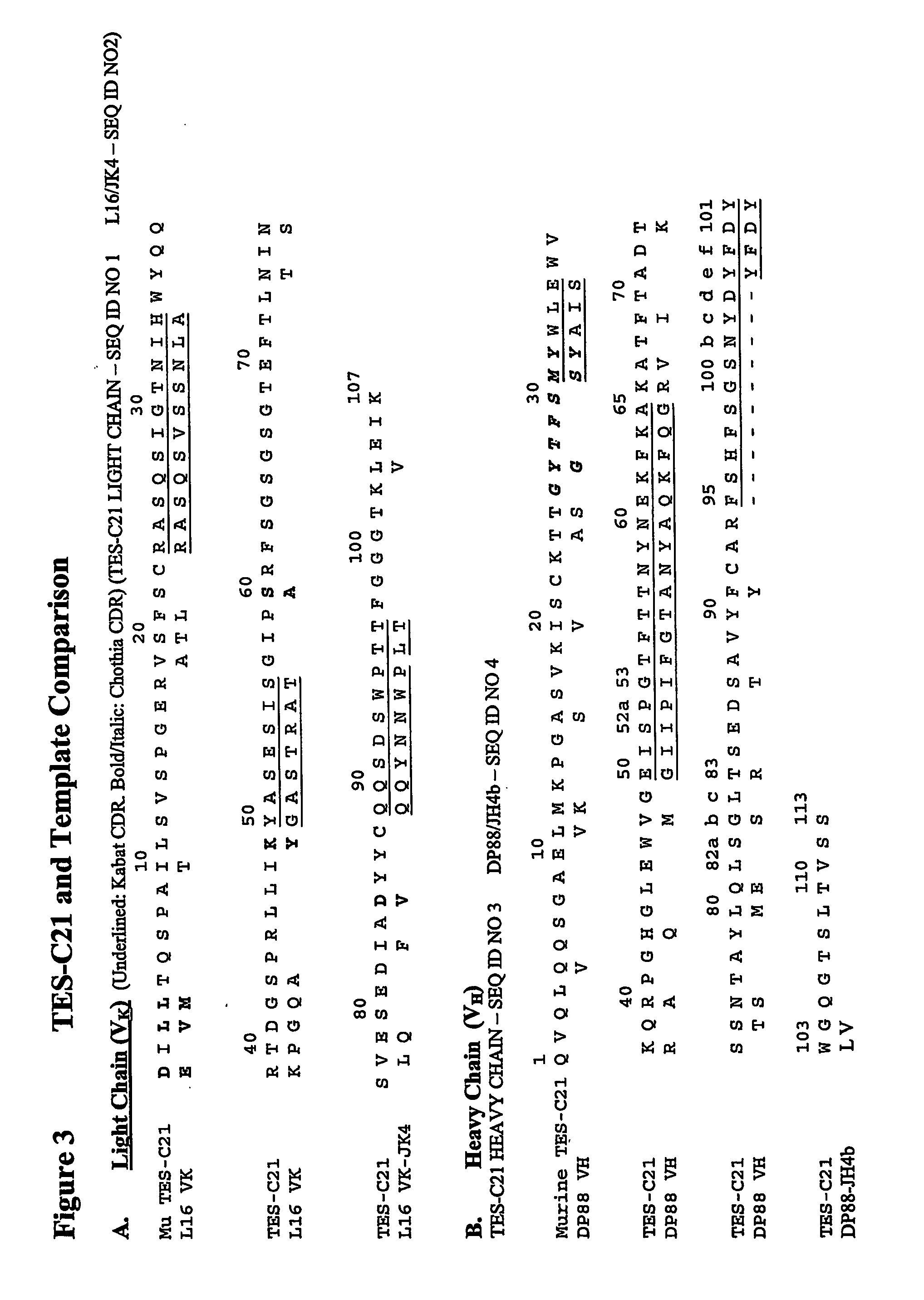Method for generating high affinity antibodies
a high affinity, antibody technology, applied in the field of high affinity antibodies, can solve the problems of cumbersome methods, not ensuring that every position is randomly substituted nor that every amino acid is possible, and the maintenance of the human character of the antibody is problematic, so as to achieve high affinity and high efficiency.
- Summary
- Abstract
- Description
- Claims
- Application Information
AI Technical Summary
Benefits of technology
Problems solved by technology
Method used
Image
Examples
example 1
Humanization of Anti-IgE Murine MAb TES-C21
[0143] The sequences of the heavy chain variable region (VH) and the light chain variable region (VL) of murine mAb TES-C21 were compared with human antibody germline sequences available in the public databases. Several criteria were used when deciding on a template as described in step 1 above, including overall length, similar CDR position within the framework, overall homology, size of the CDR, etc. All of these criteria taken together provided a result for choosing the optimal human template as shown in the sequence alignment between TES-C21 MAb heavy and light chain sequences and the respective human template sequences depicted in FIGS. 3A and 3B.
[0144] In this case, more than one human framework template was used to design this antibody. The human template chosen for the VH chain was a combination of DP88 (aa residues 1-95) and JH4b (aa residues 103-113) (See FIG. 3B). The human template chosen for the VL chain was a combination of ...
example 2
Cloning of VH and VL into Phage-Expression Vector
[0152] VH and VL were cloned into a phage-expression vector by hybridization mutagenesis. Uridinylated templates were prepared by infecting CJ236 E. coli strain (dut− ung−) with M13-based phage (phage-expression vector TN003).
[0153] The following components [200 ng of uridinylated phage vector (8.49 kb); 92 ng phosphorylated single-stranded H chain (489 bases); 100 ng phosphorylated single-stranded L chain (525 bases); 1 μL 10× annealing buffer; adjust volume with ddH2O to 10 μl] were annealed (at about 8-fold molar ratio of insert to vector) by PCR holding the temperature at 85° C. for 5 min (denaturation) and then ramping to 55° C. over 1 hour. The samples were chilled on ice.
[0154] To the annealed product the following components were added: 1.4 μL 10×synthesis buffer; 0.5 μL T4 DNA ligase (1 unit / μL); 1 μL T4 DNA polymerase (1 unit / μL) followed by incubating on ice for 5 min, and 37° C. for 1.5 hours. The product was then ethan...
example 3
Deep Well Culture for Library Screening
A. Plating Phage Library
[0156] The phage library was diluted in LB media to achieve the desired number of plaques per plate. High titer phage were mixed with 200 μL XL-1B cell culture. 3 mL LB top agar was mixed, poured onto an LB plate, and allowed to sit at room temperature for 10 minutes. The plate was incubated overnight at 37° C.
B. Phage Elution
[0157] 100 μL of phage elution buffer (10 mM Tris-Cl, pH 7.5, 10 mM EDTA, 100 mM NaCl) was added to each well of a sterile U-bottom 96 well plate. A single phage plaque from the overnight library plate was transferred with a filtered pipette tip to a well. The phage elution plate was incubated at 37° C. for 1 hour. The plate may be stored at 4° C. following incubation.
C. Culture for Deep Well Plates
[0158] XL1B cells from 50 mL culture were added to 2×YT media at a 1:100 dilution. The cells were grown at 37° C. in a shaker until the A600 was between 0.9 to 1.2.
D. Infection with Phage in De...
PUM
| Property | Measurement | Unit |
|---|---|---|
| pH | aaaaa | aaaaa |
| time | aaaaa | aaaaa |
| volume | aaaaa | aaaaa |
Abstract
Description
Claims
Application Information
 Login to View More
Login to View More - R&D
- Intellectual Property
- Life Sciences
- Materials
- Tech Scout
- Unparalleled Data Quality
- Higher Quality Content
- 60% Fewer Hallucinations
Browse by: Latest US Patents, China's latest patents, Technical Efficacy Thesaurus, Application Domain, Technology Topic, Popular Technical Reports.
© 2025 PatSnap. All rights reserved.Legal|Privacy policy|Modern Slavery Act Transparency Statement|Sitemap|About US| Contact US: help@patsnap.com



